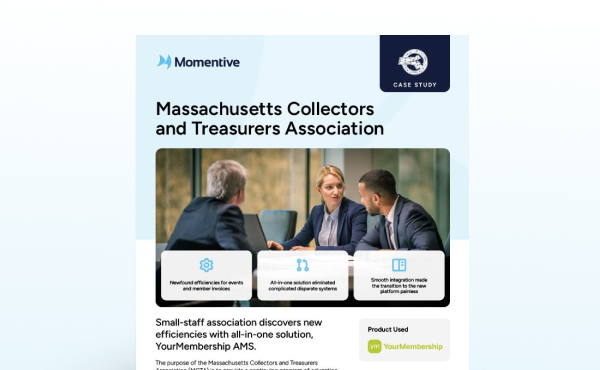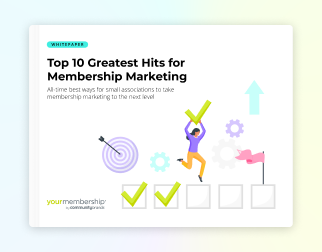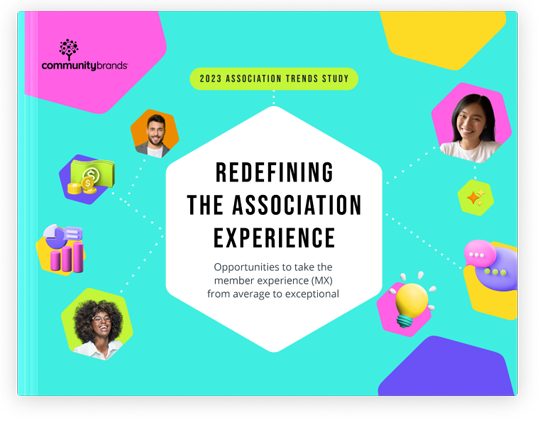Putting data to work for your association doesn’t have to be difficult. Here are tips for how to become a data-driven organization – even when you have a small staff.
Your member data is a powerful resource for your association. It can give you insights into your membership base, help you to provide a better member experience, and drive more informed business decisions. But to make the most of your organization’s data, you must have a data-driven mindset.
In this article, we’ll look at some practical ways to put a foundation of strategy, technology, and analytics in place to support data-driven decision-making at your organization.
Characteristics of a data-driven organization
Before we go any further, let’s first consider the characteristics of a data-driven organization. Becoming a data-driven association doesn’t have to be difficult, but it does require a commitment to using data. Data-driven organizations regularly use data to make improvements and grow their organization. They move beyond hunches and guesses to use insights from their data to inform business decisions.
An article by McKinley Advisors about developing a data strategy that fits your association’s culture puts organizations into three categories:
- data-disdaining
- data-informed
- data-driven
The latter category represents an association with a culture that supports making the most of their data and research efforts. Resources, staff, and energy are devoted to maintaining a strategic data plan. And data is captured, presented, shared, and updated.
Becoming data-driven might sound out of reach – especially for a small association. But it’s not. It just requires a commitment to making data-based decisions – plus the right mix of tools to support it.
How to become a data-driven organization
Once you’ve established a data-driven mindset across your organization, you need a combination of technology and strategy to support it. Here are three practical ways that YourMembership association management software (AMS) by Momentive Software can help you establish the right foundation to support your organization’s data-driven decision-making:
1. Consolidate your data.
Data that’s in multiple systems and spreadsheets can get outdated in a hurry. It’s nearly impossible to remember to update member data that’s housed in spreadsheets and various systems every time something changes. The next thing you know, you aren’t sure how to find the most recent information.
The solution: Consolidating your data in all-in-one association management software. For example, using an all-in-one solution like YourMembership AMS can help your organization to collect, secure, manage, analyze, and use your data more effectively. Here are some of the benefits of centralizing your data using YourMembership:
- It’s much more convenient, efficient, and effective than trying to manage member data in multiple systems and spreadsheets.
- It helps you to safeguard your data. YourMembership values security and helps you keep your member data safe in multiple ways. For example, YourMembership is PCI compliant and enables organizations to meet data privacy regulations, such as GDPR. YourMembership also follows password best practices, including using password standards and prompting your administrators to reset their passwords every 90 days. It also has built-in multi-factor authentication functionality, which is one of the most effective methods to prevent unauthorized account access and safeguard your members’ data.
- It helps you to not only gather information about members but also provide them with the personalized benefits they’re seeking. For example, based on your members’ interests and preferences, you can recommend new industry reports or new services offered by your organization.
- It helps you to manage everything from your membership and event registration to an online member community – in one location.
2. Put dashboards, reports, and analytics to work.
To gain data insights, you must have a way to view and share data. Make sure your AMS includes dashboards for a birds’ eye view of key performance metrics as well as advanced reporting that gives you deeper insights into data.
For example, YourMembership AMS gives you dashboard and reporting capabilities that make it easy to become data-driven, including the ability to:
- Track key metrics – You can create a list of key performance indicators (KPIs) that help you track progress toward your association’s goals. Then, configure dashboards in YourMembership to give you a quick overview into the overall health of your organization each day.
- Set up reports – You can select from pre-built reports to create hundreds of detailed reports for visibility into member growth and retention rates, active members by member type, and more. You can even create custom data queries, save them for re-use, and share them with others in your organization.
- Make your data come alive – Use advanced data analytics capabilities for data visualizations that give you added insights into various functions across your organization. Think of these as more detailed dashboards for various functions across your organization that allow each user to define how data is displayed. They provide:
- Business insights into industry standard KPIs – Advanced Analytics in YourMembership presents your association’s KPIs in one always-accessible dashboard. Easily keep track of your overall performance and fine-tune your strategy by digging deeper into your data to find answers to strategic questions.
- Quick, easy access to data for everyone – Providing association analytics to all appropriate staff and board members makes it easy for everyone to visualize your member data for quick analysis and action.
- Focused data insights – Your entire organization can save time and discover data easily with user-defined data visualizations that can be filtered to display different data to each user.
3. Use data to guide your decisions.
With your data in one secure system and the tools you need to track and analyze your data, you have what you need to become a more data-driven association. Schedule a regular meeting to review reports for each key function in your organization, and discuss things like:
- Membership trends
- What the data is telling you
- What you might do to reverse trends that are moving in the wrong direction
- What opportunities the trends might present to offer new programs or benefits that will help your association grow
Using your data to make more informed business decisions helps you manage your overall organization, plan programs, make improvements, and deliver a better member experience. And it doesn’t have to be complicated – you just need the right approaches and tools in place.






